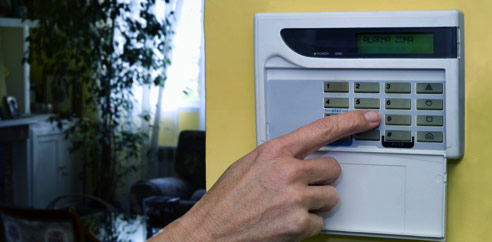Fire Alarm Maintenance: How Often Should Fire Alarms Be Tested?
 Having fire alarms in your house is essential for the safety of both occupants and property. Installing a fire alarm is just the first step, though. Fire alarm testing and maintenance are key to ensure they are always working correctly. The following are essential things to consider when you have a fire alarm.
Having fire alarms in your house is essential for the safety of both occupants and property. Installing a fire alarm is just the first step, though. Fire alarm testing and maintenance are key to ensure they are always working correctly. The following are essential things to consider when you have a fire alarm.
Fire alarm testing
Testing fire alarms tends to slip the mind of many people. Once the alarms are installed, folks rarely think of them again unless they go off. Testing the devices regularly is an important part of fire alarm maintenance. The NFPA recommends testing alarms once a month to ensure they will go off in the event of a fire.
Replacing batteries is essential for fire alarm maintenance if you’re not using a hardwired device. Batteries drain whether the device goes off or not, so you should change them once a year. If a fire detector begins to make a chirping noise, don’t ignore it. This is a sign that the batteries need to be changed right away.
If you’re using a hardwired device, it will likely have a battery backup that powers the system in case of an outage. You should inspect this battery for signs of corrosion at least twice a year.
Backup batteries should have a manufacturing date printed on them, and each manufacturer will outline a predetermined replacement date. The NFPA states that if your battery exceeds this date it’s too old, and you should purchase a new one– usually every three years.
When to replace fire alarm devices
Fire alarms have a life expectancy of about ten years. The sensors in fire alarm smoke and heat detectors wear out over time, affecting their ability to sense smoke and fire. It’s important to replace them periodically to ensure your device functions optimally.
Fire alarms have labels that tell you when they were made. If they don’t have a label, the alarm should be changed because this indicates it is old. Using a fire alarm past the 10-year mark risks not detecting smoke because it has lost its sensitivity.
Carbon monoxide detection
Many fire alarms include a carbon monoxide detector, which provides double protection against danger. However, you can also purchase carbon monoxide detectors separately.
Like fire alarms, the NFPA recommends testing your CO detectors monthly. They typically have a life expectancy of 5 to 7 years, so plan to replace them within that window. Individual devices should have labels from the manufacturer with specific guidance on how frequently to replace them.
Alarm testing checklist
Use this checklist to inspect and test your home’s fire alarm and carbon monoxide detectors.
- Visual inspection: Check the alarm for physical damage and wear. Ensure it’s securely mounted to the ceiling or wall. Make sure the sensor area is clear of dust and debris. Remove any obstructions, including furniture or decor, blocking the alarm.
- Check the power source.
- For battery-powered alarms, replace batteries at least once a year or when the low-battery signal beeps.
- Ensure hardwired alarms are properly connected to your home’s electrical system. Test and replace backup batteries per the manufacturer’s guidelines.
- Test the alarm. Press the test button to ensure the alarm is functioning. Listen for the loud beeping sound to confirm the alarm sounds as expected. If applicable, test interconnected alarms by triggering one unit and ensuring all others sound.
- Check the manufacturing date. Replace the device if it’s over ten years old.
A proactive approach saves lives
Fire prevention begins with the installation and maintenance of fire detectors. By doing your part, they can continue doing theirs. A monitored fire alarm system offers the highest level of protection for your family and home. You can count on your system to trigger an emergency response in the event of a fire, so all you need to do is focus on evacuating your loved ones safely.
NEXT STEPS:
- Contact us today to learn more about our services.
- Learn more about what home security means to us.
- Subscribe to our blog to stay informed about the latest security news and insight.

















